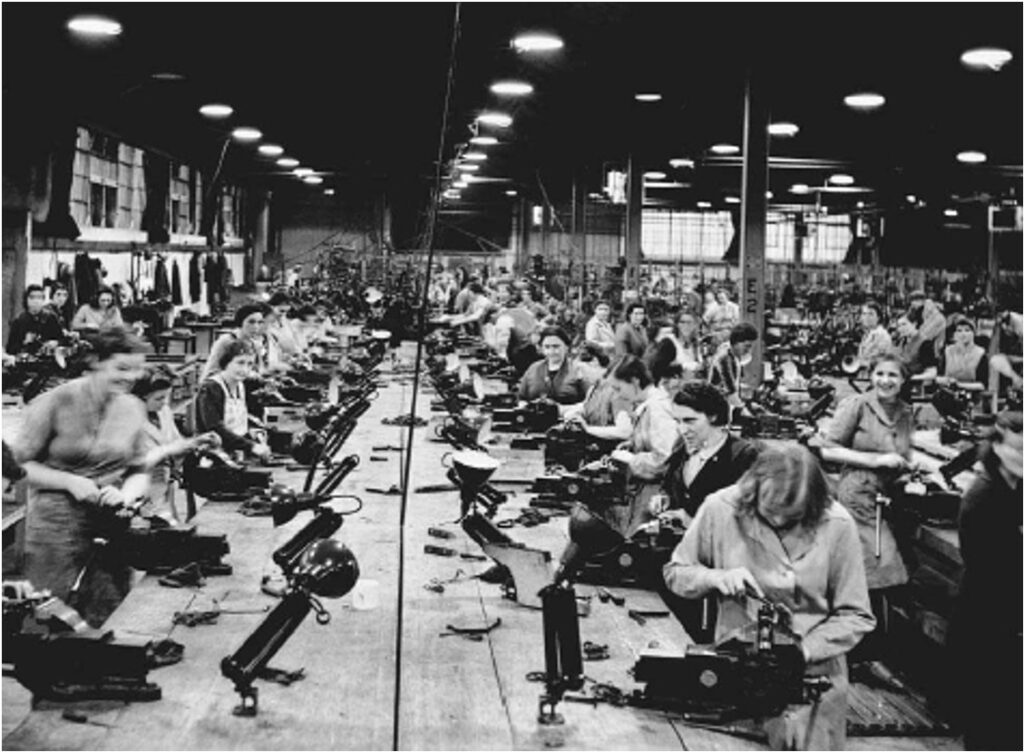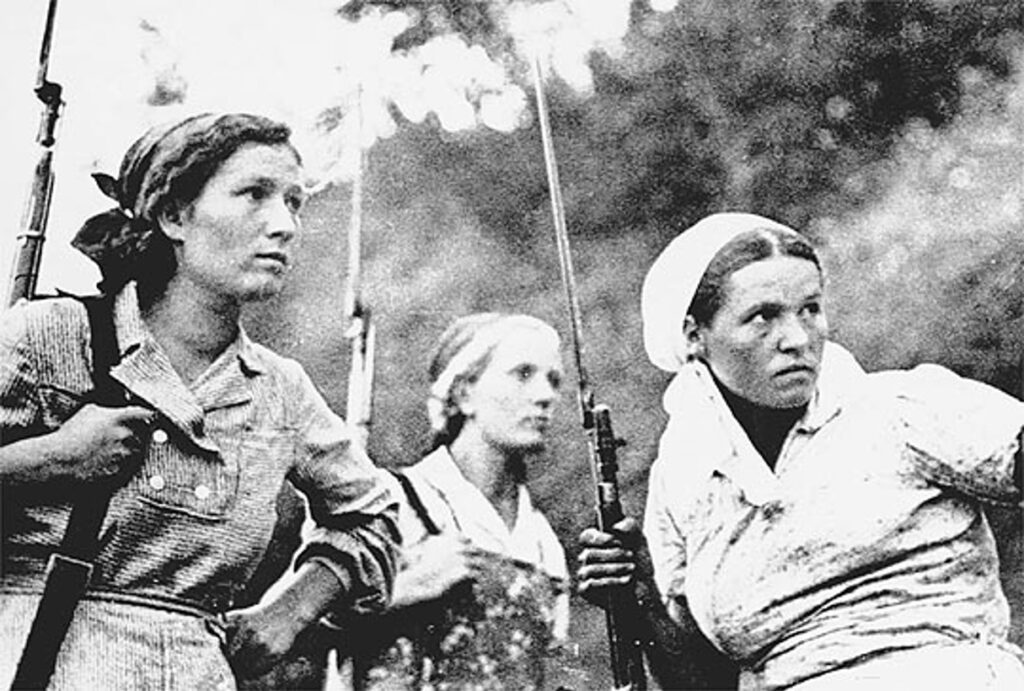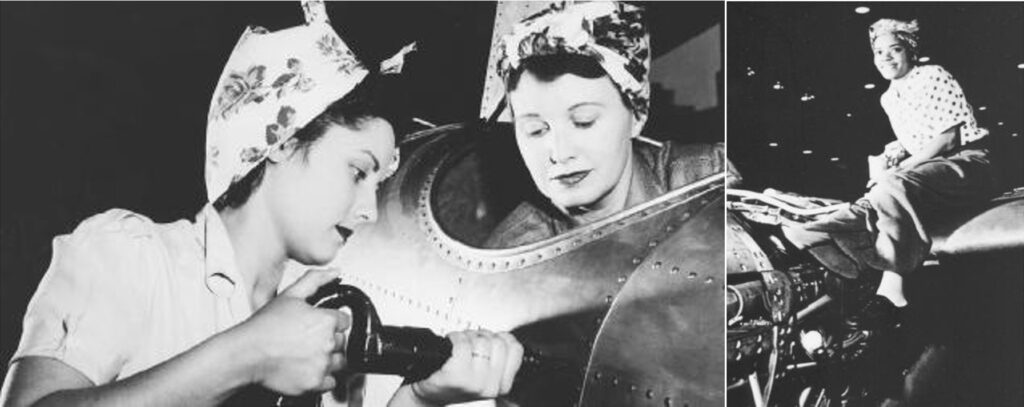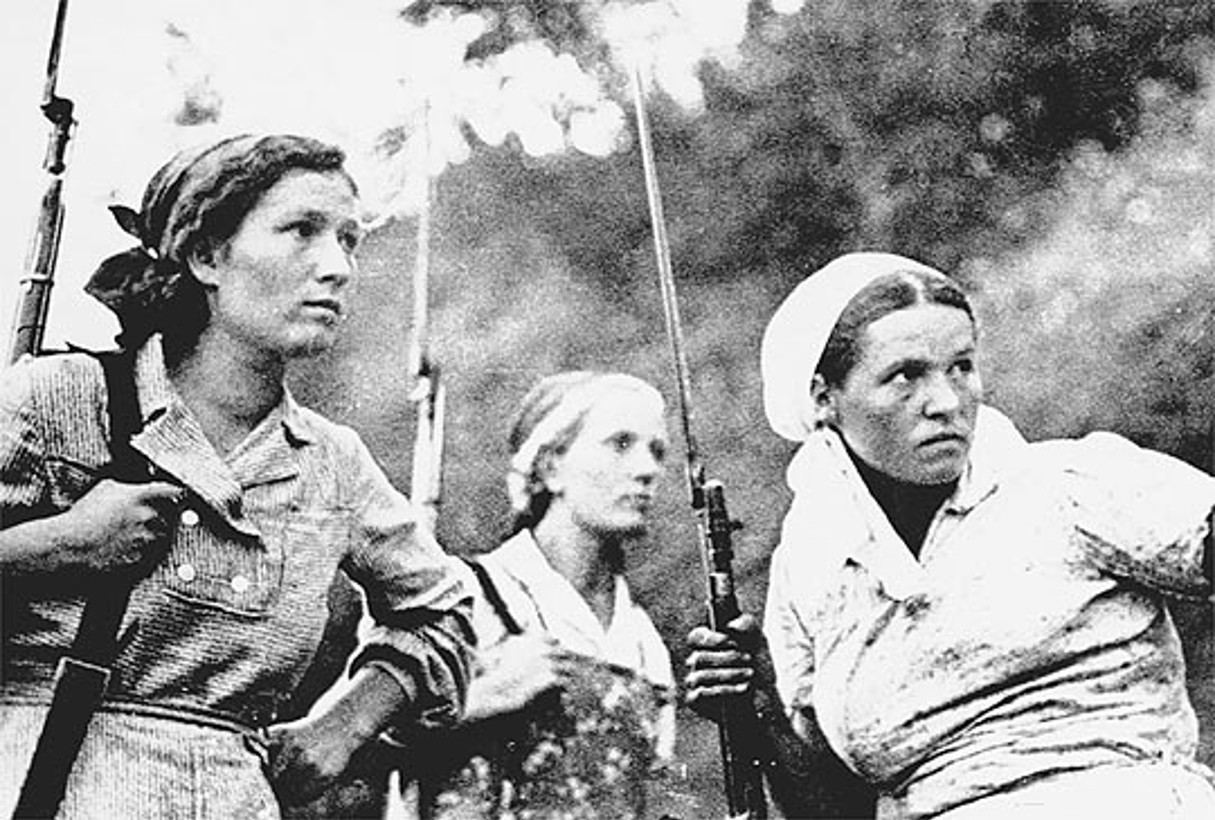|By Symbat Omasheva, Year 11 student at Nazarbayev Intellectual School in Nur-Sultan|
The Second World War, which took place from September 1, 1939, to September 2, 1945, showed that women are capable of doing what was previously considered “men’s work” and making a significant contribution to the war effort. However, ideas about the gender distribution of responsibilities and the use of physical force differed greatly between the opposing sides in the war; the Allies actively promoted women’s contribution to the outcome of the war, while the Axis powers discouraged women from working on the military front.
The Allied Powers
Great Britain
In Britain during the war years, women took an active part in the development of industry, agriculture and administration. With the introduction of industrial conscription, the number of British women involved increased in comparison with the First World War. Moreover, this article by Sirota and Bucher, found in Gale In Context: World History, argues that Britain made the most effective use of female power through the call to the auxiliary service.
Indeed, Britain was one of the first countries of the Allied powers to forget about the traditional distribution of sex-based jobs and gender stereotypes. Later on, due to the shortage of men available to do particular jobs, women of the ATS (Auxiliary Territorial Service) were recruited as radar operators, as well as anti-aircraft gun crew members. According to Sirota and Bucher, by 1941, 125,000 British women were involved in military activities, and another 43,000 joined over the next three years.

The Union Of Soviet Socialist Republics (USSR)
In the USSR, women participated in the war effort by the millions. They made up an important part of the civilian workforce and volunteered to participate in the armed forces as well. The Soviet government made the most comprehensive use of female soldiers. The Red Army and the Red Air Force were extremely popular among them. According to this viewpoint by Kelly Sirota, women fought on the front lines as snipers or tankers, and there were three whole regiments with only female fighters. Furthermore, every military speciality including infantry, armour, and field artillery, allowed adult females to serve. Soviet women also actively participated in the Red Cross organisation, fire-watching operations, and civil defence.1

The United States of America
American women played a significant role in industry by doing semi-skilled jobs, such as lumberjacks, shell loaders, crane operators, aircraft makers, and tool makers. Around 36 percent of the total manufacturing labour force in the US consisted of women. According to Rogers and Thomas, an estimated 350,000 also joined the Women’s Army Auxiliary Corps, the Marine Corps Women’s Reserve, and the Navy Nurse Corps.2 According to Sirota, most of the administrative work at the Naval Department at the Pentagon in the United States was done by women.
According to this article I found in Gale In Content: World History, approximately 60,000 American nurses were a part of the Army Nurse Corps (ANC). No matter what location they worked in, they risked their lives on the first fronts on water, land, and in the air, helping not only compatriots but also opponents, forgetting about prejudice.

Right: Woman working on an assembly line building airplanes. World War II Reference Library, edited by Barbara C. Bigelow, et al., vol. 4: Primary Sources, UXL, 2000. Gale In Context: World History https://link.gale.com/apps/doc/PC3411887314/WHIC?u=nisns&sid=bookmark-WHIC&xid=b7fad7e9
The Axis Powers
Germany
Compared to the Allies, I would argue that the Axis forces neglected military womanpower during the Second World War. The main reason for this was the fascist beliefs and opinion of Hitler. The presence of females in the workplace was against Hitler’s “Kinder, Kirche, Küche” messaging.3 This was an ideology that women should only pay attention to “Children, Church, Kitchen”, and not intervene in hostilities.
Only in 1943, when Albert Speer became the head of industry, did females begin to be actively recruited into defence industries and the military. About 450,000 German women served their country.4 Although this is not a small number, it makes up less than half of the American women in aircraft, and it seems even smaller compared to the millions of Soviet women participating in the war.
Japan
Despite the fact that very little information is available about the distribution of female power in other members of the Axis powers, as in Germany, the Japanese government was reluctant to use women in the workforce, establishing a strict distribution of jobs based on gender stereotypes. Most of the time, school students were recruited instead of women. Even though approximately more than two and a half million Japanese females joined the workforce between 1940 and 1945, a much larger number of them did not enter.5
Women’s war work significantly contributed to the Allied victory
Based on the information I have found about the number of women participating on opposing sides during the Second World War, it can be concluded that the use of womanpower by the Allies contributed to the outcome of the war as they received significant help from women in both the manufacturing industry and in military actions. The number of women contributing to the war effort on the side of the Allies significantly exceeded the enemy’s. Throughout the sources I have read, the trend is that the countries of the Axis powers were less keen on women working outside their homes, meaning Britain, the USSR, and the United States gained an advantage through the use and promotion of womanpower. I believe the main factor creating this advantage was the ideology of the authorities – not all countries were ready to turn a blind eye to gender stereotypes and the distribution of work by sex. As a result, the willingness to embrace new ideas gave the Allied powers superior strength, especially on the home front.
If you enjoyed reading about the role of women in different countries during the Second World War, you may like:
- From Coupons to Cocktail Dresses: Tracking Changes to Women’s Wartime Fashion Using the Picture Post
- When the Past Comes A-knocking – Why We Shouldn’t Forget About the Wars
- Between the Acts: Remembering War during the Interwar Period
- Celebrating VE Day in 1945 and 2020
If you enjoy reading about the evolution in the role of women and women’s rights, you might like:
- New Zealand – Trailblazers in Women’s Suffrage
- Birth Control: A History in Women’s Voices
- Exploring Cultural Expectations of Women Advocated in Historical Newspapers
- The Evolution of Women’s Football
- Discovering New Points of View about European and Colonised Women
- Leading Ladies: The actresses who fought for women’s suffrage
- Rogers, K., & Thomas, J. (2010). Pearson Baccalaureate: History: Causes, Practices and Effects of Wars for the IB Diploma (Pearson International Baccalaureate Diploma: International Editions). London: Pearson Education.
- Rogers, K., & Thomas, J. (2010). Pearson Baccalaureate: History: Causes, Practices and Effects of Wars for the IB Diploma (Pearson International Baccalaureate Diploma: International Editions). London: Pearson Education.
- Rogers, K., & Thomas, J. (2010). Pearson Baccalaureate: History: Causes, Practices and Effects of Wars for the IB Diploma (Pearson International Baccalaureate Diploma: International Editions). London: Pearson Education.
- Rogers, K., & Thomas, J. (2010). Pearson Baccalaureate: History: Causes, Practices and Effects of Wars for the IB Diploma (Pearson International Baccalaureate Diploma: International Editions). London: Pearson Education.
- Rogers, K., & Thomas, J. (2010). Pearson Baccalaureate: History: Causes, Practices and Effects of Wars for the IB Diploma (Pearson International Baccalaureate Diploma: International Editions). London: Pearson Education.



 The schools within the Nazarbayev Intellectual Schools group have access to the
The schools within the Nazarbayev Intellectual Schools group have access to the 